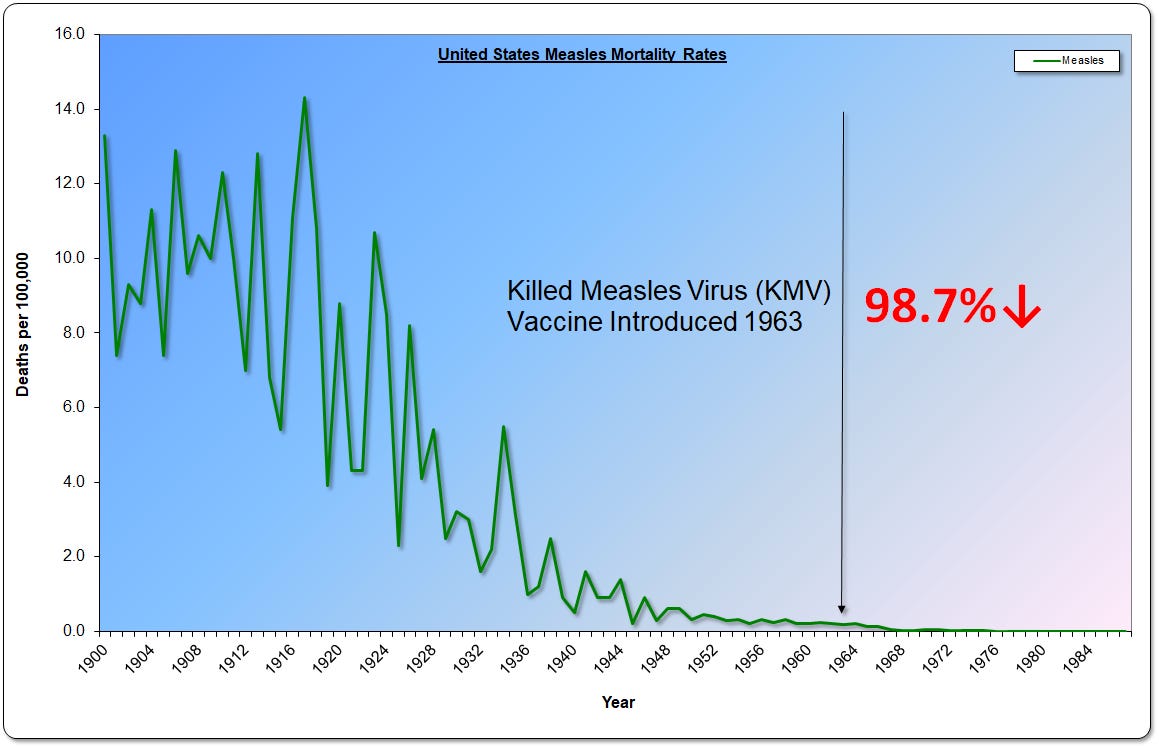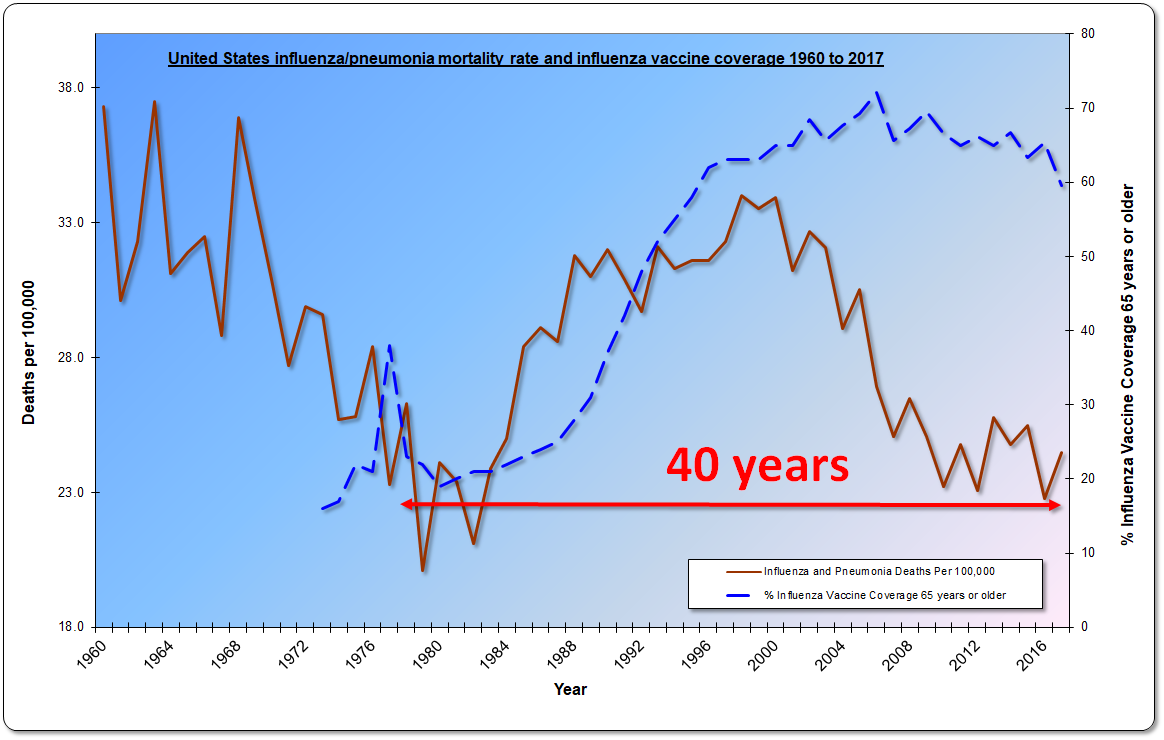The Germ Paradigm Trap (Part I)
Germs
They are the singular cause of all infectious diseases.
It’s a basic understanding we all have. It’s an indisputable fact. It’s something that can’t be questioned. It’s woven into our collective human consciousness.
Most people believe that once upon a time, way back in history, various germs caused many deadly diseases. Then very brilliant scientists invented medications and vaccines, and now thanks to them, we don’t have to worry about these nasty sicknesses. That’s what I believed at one time, and several doctors and nurses I know thought that was true as well.
Well, that was until they went and looked at the historical and scientific information.
So, what caused the decline in deaths from diseases such as measles and whooping cough? So what really happened?
The following might be shocking and even impossible to believe. But all the following evidence is based on verifiable public health records and historical documents. It’s a reality that might collide with your rock-solid beliefs, but it’s information anyone can look up and verify.
Measles
In the 1800s, measles was a major cause of death. Many people believe it was a vaccine that caused the deaths from measles to be conquered. But, when did measles deaths actually start to decline? When were the measles vaccines introduced? What do history and data tell us?
This chart shows the death rate from measles in the United States from 1900 to 1987. The first measles vaccine, which was a killed measles virus, was introduced in 1963. By that point, the death rate had declined from its peak by a massive 98.7%. In 1967 a live measles virus vaccine was introduced to replace the 1963 vaccine. An added trend line shows that the vaccine had little impact on the already greatly reduced death rate.
This chart shows the death rate from measles in England. The English started recording mortality statistics much earlier, in 1838. Measles deaths plummeted beginning in the late 1800s, reaching nearly zero by the 1950s. In 1968 England began to vaccinate for measles, 5 years later than in the United States. By that point, the death rate had declined from its peak by an even more massive 99.8%. An added trend line shows that the vaccine had little impact on the already greatly reduced death rate.
The massive decline in deaths from measles was sometimes noted in scientific journals. And as pointed out, it was the improved nutrition of children that made all the difference.
Before the general nutrition status of European children reached the high level it is today, measles infection was something to be feared. As reviewed by Morely and colleagues, measles accounted for 11% of all deaths in Glasgow in the years 1807-1812... Even in the absence of a vaccine, by 1960, notification of childhood measles in England and Wales was only 2.4% and mortality fell to 0.030%, which is 1:200 of the 1908 Glasgow mortality rate.1
Scurvy is a deficiency of vitamin C. Back before the nutrition of people vastly improved, scurvy was a common condition that could result in death. This chart shows as the death rate from vitamin C deficiency declined, so to did deaths from measles. So the true reason for the massive decline in measles deaths was the improved health of the people. Not any medical intervention as often is assumed.
Is this information new? No. This data has been available for decades. A chart identical to the chart I would create many years later was available in the 1960s from the United States Vital Statistics. The information showing this massive decline in deaths before any vaccine was simply ignored.
Again, by the 1950s, measles was not considered a serious problem for most. In this 1959 article from the British Medical Journal, Dr. John Fry notes that over 10 years, there were few complications and all children made complete recoveries. What’s interesting is the comment that mothers found that children after an episode of measles seemed to be “so much better.”
In the majority of children the whole episode has been well and truly over in a week, from the prodromal phase to the disappearance of the rash, and many mothers have remarked ”how much good the attack has done their children,” as they seem so much better after the measles... In this practice measles is considered as a relatively mild and inevitable childhood ailment that is best encountered any time from 3 to 7 years of age. Over the past 10 years there have been few serious complications at any age, and all children have made complete recoveries. As a result of this reasoning no special attempts have been made at prevention even in young infants in whom the disease has not been found to be especially serious.2
During the same period in history, Dr. Klenner simply used vitamin C to help children quickly pass through measles without incident in a matter of days. But, unfortunately, all of this history, and much more, has been lost in favor of a single belief system – vaccination.
In the Spring of 1948 measles was running in epidemic proportions in this section of the country. Our first act, then, was to have our own little daughters play with children known to be in the “contagious phase.” When the syndrome of fever, redness of the eyes and throat, catarrh [inflammation of a mucous membrane], spasmodic bronchial cough, and Koplik spots [measles skin spots] had developed and the children were obviously sick, vitamin C was started. In this experiment it was found that 1000 mg every four hours, by mouth, would modify the attack... When 1000 mg was given every two hours all evidence of the infection cleared in 48 hours... the drug (vitamin C) was given 1000 mg every 2 hours around the clock for four days... These little girls did not develop the measles rash during the above experiment and although exposed many times since still maintain this “immunity.”3
The Infectious Disease Vanishing Act
By the time laboratory medicine came effectively into the picture the job had been carried far toward completion by the humanitarians and social reformers of the nineteenth century . . . When the tide is receding from the beach it is easy to have the illusion that one can empty the ocean by removing the water with a pail.4
So what about the death rate of other infectious diseases? When did they decline? What effect did vaccines have on their death rate? Again, what do history and data tell us?
This chart shows the death rate from whooping cough in the United States from 1900 to 1957. The whooping cough vaccine began to be used in the late 1940s. By that point, the death rate had declined from its peak by 92.4%.
This chart shows the death rate from whooping cough in England. In 1957 England began to vaccinate for whooping cough nationally. By that point, the death rate had declined from its peak by a massive 99.7%.
The death rate for scarlet fever, a bigger killer in the 1800s than measles or whooping cough, reached zero without any vaccine.
The death rate for flu and pneumonia declined by about 90% from 1900 until the late 1970s, when vaccination began.
Since that time, vaccination levels for the 65+-year-olds have remained high, yet the death rate has not improved in about 40 years of vaccination.
In fact, the death rate for all infectious diseases, like measles, began to plummet starting in the late 1800s before any vaccination programs or with no vaccination programs at all.
Even by the 1930s and 1940s, people recognized that these infectious diseases were vanishing and becoming of little importance when they had been big killers only decades earlier. So we were on the right track of improving health and wellbeing.
All of the old menaces like typhoid, smallpox, measles, scarlet fever, whooping cough and diphtheria have become minor causes of death. The chance is very remote indeed that any of them will ever again assume sufficient importance in the mortality tables seriously to affect the general death rate.5
From the vital statistics of insurance companies, we learn that life for children in this country has been made infinitely safer. We have reduced death from principal communicable diseases of childhood—measles, scarlet fever, whooping cough, diphtheria by 31% in a single year to a new record low, a point actually promising complete eradication of these diseases!6
But today, we have forgotten this history. As a result, there is almost always a complete panic whenever there is some so-called infectious disease in the news. Instead of learning from history that these diseases were all conquered by improved health, we always fall back to the fear and using tools that didn’t have the major impact that we have been told they had.
The Germ Paradigm Trap (Part II)
Clive E. West, PhD, “Vitamin A and Measles,” Nutrition Reviews, vol. 58, no. 2, February 2000, p. S46.
British Medical Journal, February 7, 1959, pp. 380-381.
Fred R. Klenner, MD, “The Use of Vitamin C as an Antibiotic,” Journal of Applied Nutrition, 1953.
René Dubos (1901–1982), Mirage of Health, 1959
Dr. Louis Dublin, “Better Economic Conditions Felt in Fewer Deaths,” Berkley Daily Gazette, December 27, 1935.
2 Inches Taller . . . 15 Pounds Heavier,” Life, June 2, 1941, p. 71.












Hello mr. Roman Bystrianyk,
I had your book years long on my wish-list, just was always out of my reach with its price - of which I do not think is expensive as contains such an incredible research work, just was for me - I can image the amount of time you spent to collect the data - eventually "BookDepository" was bought out by amazon and I do not touch amazon.
As to how DS treat your work through its vallons.... is not surprising.
Thank you very much for all what you do
Yes! https://georgiedonny.substack.com/p/were-so-far-down-the-rabbit-hole
Jo